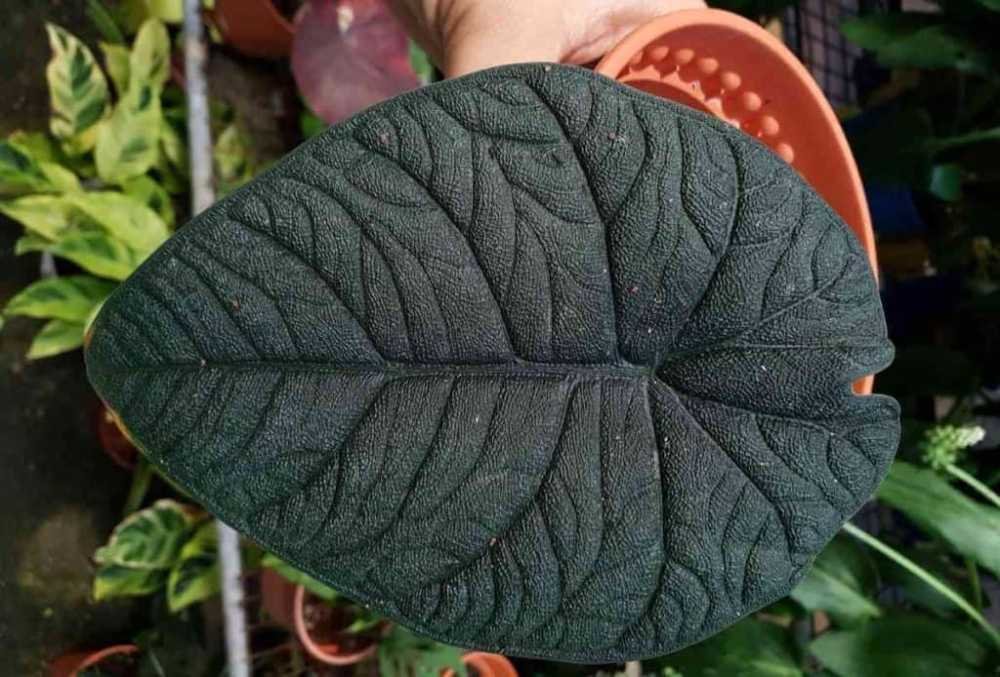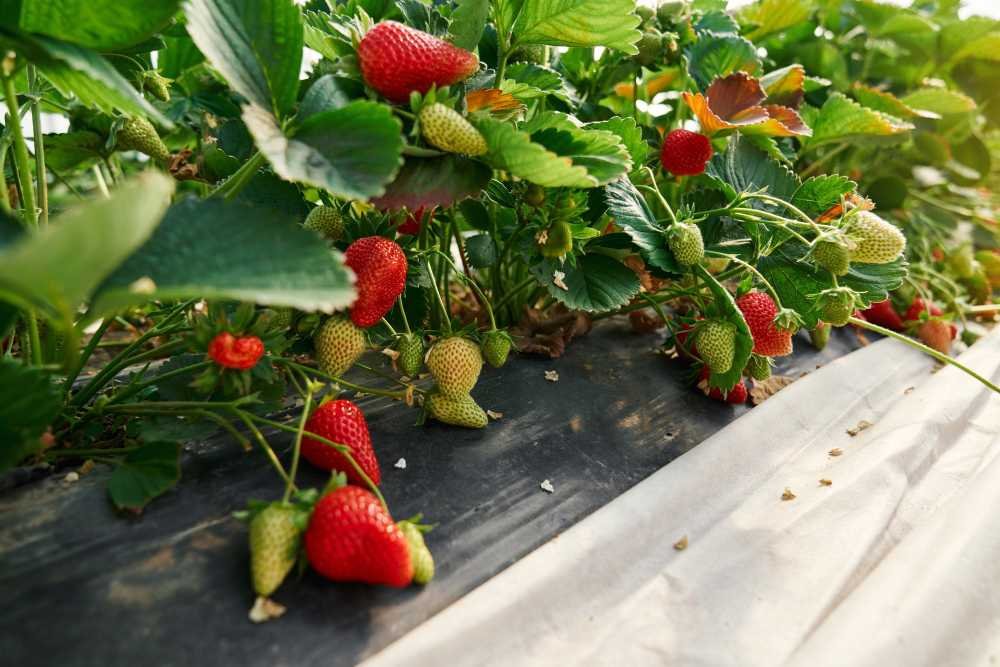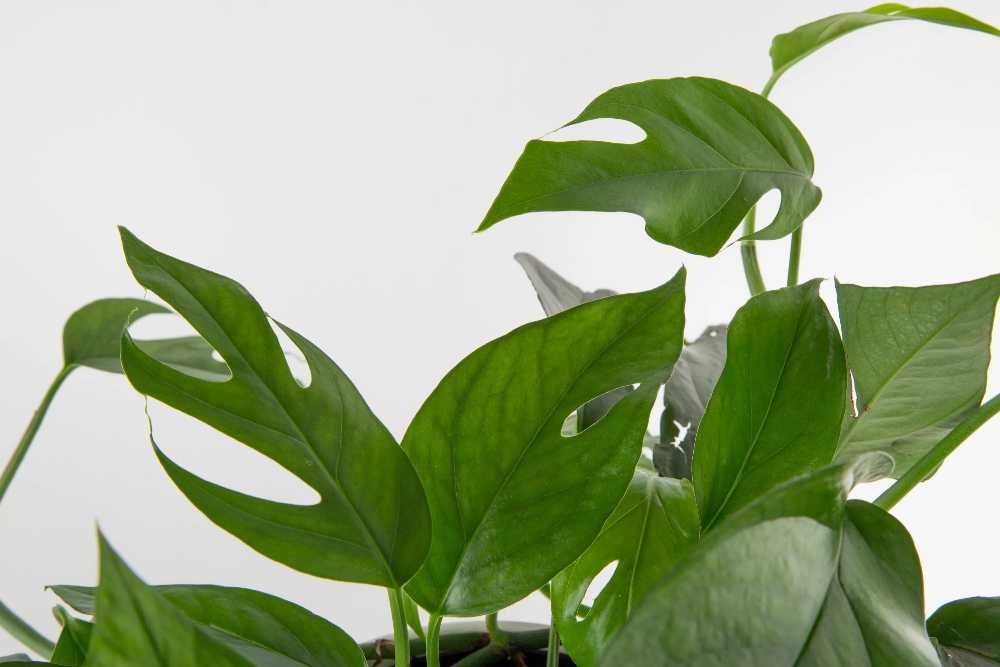Alocasia Melo and Alocasia Maharani are two indoor plants that share a lot in common. Both plants are green in color, have large, textured leaves, and require similar growing conditions to thrive. They are also both toxic to pets and children.
These traits can make it difficult to tell them apart, especially if you are new to gardening. However, they have unique differences in terms of leaf shape, plant size, petiole colors, leaf color, and even venation colors and patterns.
If you are out shopping for a new houseplant and aren’t sure whether the plant you purchase is an Alocasia Melo or Alocasia Maharani, this guide is for you. Below is a breakdown that differentiates Alocasia Melo vs Maharani so you can make an informed choice.
Differences Between Alocasia Melo and Alocasia Maharani
1. Leaf Shape
The leaf shapes of Alocasia Melo and Alocasia Maharani are almost similar. However, with close inspection, you can notice the differences. Alocasia Melo has large, heart-shaped leaves with wide blades. While the leaf base is more rounded to form a heart shape, the margin is smooth and lightly undulated. The leaves also have smooth margins, although they may have a few bumps.
On the other hand, Alocasia Maharani has arrowhead-shaped leaves that are elongated with a tapering tip. They are also narrower than those of Alocasia Melo. The base of the leaf forms an acute angle, and the tip is elongated and tapered. It also exhibits a wave appearance at the leaf margins.
2. Leaf Color
Alocasia Melo has dark green leaves on the top, while Alocasia Maharani has green leaves with hues of gray. Although the difference may be obvious and conspicuous on some plants, you may have to perform a side-by-side comparison for others. This is because young leaves may have generic characteristics. This is also true when the plant is dormant during winter.
The underside of the leaves can also be a telling factor. Alocasia Melo has leaves with pale green undersides, while those of Alocasia Maharani have red-purplish undersides with light green veins. The combination results in a sharp contrast that makes it easy to identify the plant.
It is advisable to only compare mature leaves since young leaves are yet to transition. Also, ensure you have good lighting for better observation.
3. Plant Size
Despite being similar in numerous ways, Alocasia Melo and Alocasia Maharani differ in size. They both are slow growers, but Alocasia Melo can grow as tall as 2 feet. The leaves also grow to the same length as the stems and can be as big as 25cm. Alocasia Melo grows in a more compact and bushy manner.
On the other hand, Alocasia Maharani grows up to 14 inches in height, and the leaves can grow as big as 8 inches. Keep in mind that for younger plants, growing conditions can affect how big the plant is. For example, poor lighting may cause stunted growth and prevent the plant from reaching its full potential. It is crucial not to use younger plants when comparing Alocasia Melo vs Maharani as they have not reached their mature size.
4. Venation Pattern
Both plants have conspicuous midribs and veins that extend toward the leaf margin. The smaller veins of Alocasia Melo have an unpredictable branching pattern that goes deep into the leaf’s lamella. They are also more conspicuous against the leaf’s color.
The veins on Alocasia Maharani have a more predictable pattern and lie more on the surface of the leaves. The shallow venation pattern appears as a delicate and intricate network. Also, most of the smaller veins connect halfway between the bigger veins when they extend away from the midrib.
You can compare the venation pattern on Alocasia Maharani with a zipper or feathers, while those on Alocasia Melo look like the patterns on a walnut.
5. Venation Color
If you are unsure when comparing Alocasia Melo vs Maharani, the only sure way to do so is by checking the vein color. Alocasia Melo has dark veins that almost match the dark-green leaf color.
In some cases, the deep veins may appear darker because the lamella blocks light, making them less visible. Alocasia Maharani, on the other hand, has whiter veins that sit on the leaf surface instead of being embedded as is the case with Alocasia Melo. They are also broader and reflect more light since there is nothing blocking the light.
6. Petiole Color
While it may not be the first thing you notice when buying a plant, examining the color and markings on the petioles can help you identify them. When you observe the petiole of Alocasia Melo, you will notice consistent coloring. The leaves have a consistent dark green color, including the veins, while everything else is pale green. The petiole does not have any markings and is also pale green.
Unlike Alocasia Melo, Alocasia Maharani has different colors on the upper and underside of the leaf. Since the leaves usually have a reddish-purplish color, they can sometimes extend to the petiole. As such, you may notice pinkish or red markings on the petiole, particularly where the plant emerges from the soil.
7. Growing Conditions
Knowing the right conditions allows you to adequately care for and maintain these exotic plants. Luckily, Alocasia Melo and Alocasia Maharani share similar growing conditions. The two plant varieties thrive in bright, indirect light and require well-draining, moist soils. They also need high humidity and warm temperatures.
Ensure to protect your plants from direct sunlight as it can scorch the leaves. However, Alocasia Melo is more resilient and can survive in low-light conditions. Alocasia Maharani, on the other hand, needs more light to showcase its bold colors and venation patterns.
Alocasia Melo vs Maharani: Conclusion
Alocasia Melo and Alocasia Maharani are beautiful plants with distinct foliage that can add elegance and an exotic touch to any home. If you want to differentiate them, so you can get the right one for your home, the above information is an excellent place to start.



